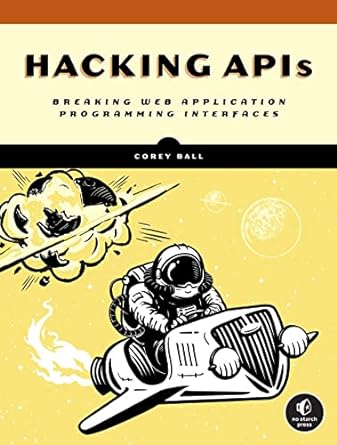|  | Hey everyone,
Sorry for skipping last week’s issue. I was knocked out with a nasty sinus infection and spent most of the time horizontal. Thankfully I’m finally on the mend and back at the keyboard.
This week’s issue carries a bit of a heavier tone than usual. We’ve lost Mikael Rogers: an incredibly influential voice in the Node.js and broader web development world. Whether you knew him by name or not, his work likely touched your projects in some way. It’s a sad moment, but also a reminder of how much impact one person can have on this ever-growing, ever-connected ecosystem of ours.
On a brighter note, a big thank you to Murf AI for sponsoring this issue. If you’ve been curious about voice generation, or you have an idea for an app that could use it, they’re running a contest right now that might be worth your time. Go check it out!
As always, thanks for reading—and for being part of this curious and passionate community. Let’s keep building.
Happy coding!
— Luciano | This issue is kindly sponsored by:  | “Should array indices start at 0 or 1? My compromise of 0.5 was rejected without, I thought, proper consideration“ — Stan Kelly-Bootle , Author | 
| Farewell Mikael — Mikael Rogers, a true pillar of the Node.js and open source communities, has passed away at just 42, after a fierce battle with cancer. I never met Mikael personally, but he influenced me more than he’ll ever know. If you’ve heard of io.js or used the popular request package, then you’ve already crossed paths with his work, even if unknowingly. Mikael wasn’t just a builder. He was a bridge between worlds, a fierce advocate for openness and community, and someone who helped shape how we write code today. It feels like losing a mentor from afar, a quiet guiding voice. So rather than despair, I want to invite you to celebrate him. Isaac and John both wrote moving tributes that I recommend reading. You can also sign a guestbook for his family. And if you want to dive deeper, here's a GitHub repo started by Mikael himself where people are sharing memories in the form of issues. Let’s remember Mikael by doing what he championed best: building things that matter, together. Farewell Mikael! View Repository | Aceternity UI — Last week I accidentally bumped into Aceternity UI… and honestly, it kind of blew my mind. This isn’t your typical component library with the usual suspects like buttons, date pickers, or input fields. Nope. Aceternity is all about vibes. It's a collection of animated, interactive, delight-driven components designed to make your site feel alive. Think gooey cursors, magnetic buttons, parallax backgrounds, hero sections that actually feel heroic… you get the idea.It’s built with React, Tailwind CSS, and Framer Motion, and all the available components are free to use, so you can just drop them into your project and go wild. There’s even a live playground where you can tweak things in real time before you copy the code. This might be the secret sauce your website might be missing. Visit project | Announcing Vitest 3.2 — Vitest has quickly become my favorite test runner (when I’m not using the built-in Node.js one, that is). It’s fast, full of useful features, and genuinely enjoyable to work with. Always great to see the community keeping the momentum strong. So what’s new in version 3.2? Quite a bit—and you can check out the full list in the release post if you're curious. My personal highlights? Two stand out. First, a much-improved coverage implementation. Second, the new ability to extend built-in matchers with your own custom ones. Love that kind of flexibility. Read article | The Historical Tech Tree — This might seem a bit off-topic... but is it, really? The Historical Tech Tree is an interactive map that showcases humanity's most important technological inventions... starting all the way back with stone tools from 3 million years ago. That’s even before Homo sapiens entered the scene! And from those primitive beginnings, you can trace a mind-blowing acceleration of innovation leading all the way to things like... Reflective LLMs. If you want to keep it close to home, you can filter by Computing and follow the path from mechanical calculators to microchips to modern AI. It’s fascinating to see how every breakthrough stands on the shoulders of countless others. For us developers, it's a powerful reminder. What we build today doesn't live in a vacuum. We're part of a long, incredible chain of invention. And maybe... just maybe... something we write this week ends up as a tiny node on this tree someday. Visit website | sponsored Murf Coding Challenge 2 — Build something awesome with the Murf Voice API and compete for $1000 in prizes + 1 million API credits. Murf offers a powerful voice solution for generating multilingual, hyper-realistic speech. With a clean RESTful API, Python SDK, and a new Streaming API for real-time audio, it’s perfect for interactive apps, voice assistants, or anything that needs to talk. Ready to take the challenge and win? Join the challenge! | Obra Icons — I haven’t featured an icon pack in a while. Probably because I got into the lazy habit of defaulting to Lucide, just because it’s so easy to use with React. But last week I discovered a nice alternative worth checking out. Obra Icons is a clean, consistent set of UI-friendly icons with both stroke and fill variants. They feel carefully designed and cover a wide range of use cases without getting too flashy. It also comes with convenient React and Svelte libraries, so you can drop icons into your project with minimal setup. Just install and go. There's even a Figma plugin and a smart search to help you find what you need quickly. If your UI needs a little visual polish, this might be the perfect upgrade. Read article | Pushing docker images directly to remote servers — For small side projects, I often skip setting up (and paying for) a Docker registry (I know... I am a cheap lazy bastard). I just push images from my machine or CI directly to a remote server. Usually that means saving the image to a tar and loading it over SSH. It works, but it’s not ideal. Docker ends up transferring the full image every time... no caching, no layer reuse! That’s where Unregistry comes in. It acts as a temporary registry over SSH, letting Docker push images while taking full advantage of layer caching. Only the new or changed layers get transferred, making deploys faster and way more efficient. If you’re tired of re-sending hundreds of MBs on every deploy, this little tool could save you a lot of time and bandwidth. View Repository | Partial Keyframes — If you're the kind of person who loves crafting UI animations from scratch, not just copy-pasting them from Aceternity, this is a trick you’ll want in your toolbox. CSS keyframe animations are way more powerful than most developers realize. With partial keyframes, you don’t need to define both from and to. Just specify one end and the browser fills in the rest based on the current state. It sounds simple, but it opens the door to dynamic, reusable animations that layer beautifully without duplication. It completely changed how I think about writing animations. If you're serious about building elegant, maintainable motion in your UI, you'll love this pick. Read article | | Hacking APIs: Breaking Web Application Programming Interfacesby Corey J. Ball | 
| Hacking APIs is a crash course in web API security testing that will prepare you to penetration-test APIs, reap high rewards on bug bounty programs, and make your own APIs more secure. You'll learn how REST and GraphQL APIs work in the wild and set up a streamlined API testing lab with Burp Suite and Postman. Then you'll master tools useful for reconnaissance, endpoint analysis, and fuzzing, such as Kiterunner and OWASP Amass. Next, you'll learn to perform common attacks, like those targeting an API's authentication mechanisms and the injection vulnerabilities commonly found in web applications. You'll also learn techniques for bypassing protections against these attacks. | | This would be a good time to stop, but we won't! 🤓 | 👋 That’s all for this week. See you next Monday! Greetings from your full stack friends Luciano & Andrea | | If you enjoy FullStack Bulletin, consider sharing this newsletter with your friends and colleagues.
If there's something we can improve, let us know!
You can also sponsor the next issue! |
|
|
|
|
|
| | |
|
|
|
|
|
Add a comment: